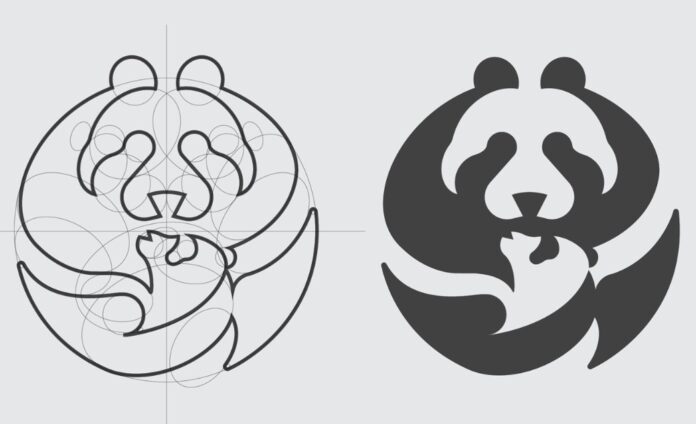
In the dynamic and visually-driven landscape of modern business, a strong logo is a linchpin for establishing brand identity and recognition. As companies vie for consumer attention, designers seek innovative ways to create logos that not only resonate but also leave an indelible mark in the minds of viewers.
Enter the realm of negative space manipulation – a design technique that wields the power of “less is more” to craft logos that are not only aesthetically pleasing but also conceptually profound.
An AI logo generator is an innovative tool that utilizes artificial intelligence to create custom, professional-looking logos in mere minutes, offering an efficient and cost-effective solution for businesses and individuals seeking to establish a unique brand identity
In this article, we embark on a journey into the realm of negative space in logo design. We will explore the intricacies of this design approach, dissect its various applications, and uncover the strategies that underpin its successful implementation.
Whether you’re a seasoned designer looking to sharpen your skills or a business owner aiming to understand the nuances of effective logo creation, this guide will equip you with the knowledge and inspiration needed to harness the potential of negative space.
Understanding the Power of Negative Space
Negative space is a design element that often goes unnoticed by the casual observer. It is the “blank” or unutilized space that surrounds and interacts with the main elements of a composition.
Yet, this seemingly empty space is far from passive – it possesses the ability to transform a logo from ordinary to extraordinary. When harnessed thoughtfully, negative space can create a sense of intrigue, stimulate engagement, and communicate messages that transcend the confines of words and symbols.

Simplify for Impact
The allure of negative space lies in its capacity to simplify complexity without sacrificing depth. By skillfully removing portions of a logo’s elements, designers can conjure the illusion of hidden shapes, giving rise to a sense of discovery.
This engagement draws the viewer in, inviting them to unravel the layers of meaning embedded within the logo. A prime example of this approach is the iconic FedEx logo, where the negative space between the letters cleverly conceals an arrow, symbolizing movement and efficiency.
Convey Dual Meanings
Negative space serves as a powerful tool for crafting logos that convey dual meanings, a feat that adds a layer of sophistication and intrigue to the design. By capitalizing on the interplay between positive and negative space, designers can evoke emotions and thoughts that linger in the viewer’s mind.
A renowned instance of this technique is the Pittsburgh Zoo logo, where the white space nestled between the black animals forms the silhouette of the city’s skyline. This synergy of wildlife and urban life encapsulates the essence of the brand in a single, harmonious composition.
Embrace Simplicity
In the pursuit of effective negative space utilization, simplicity emerges as a guiding principle. Complex designs risk overwhelming the viewer, diluting the impact of the logo’s underlying concept. Embracing a minimalist approach ensures that the logo remains elegant, legible, and visually compelling – hallmarks of enduring design.

Maintain Balance and Harmony
Within the intricate dance of design, negative space acts as a stabilizing force, preserving balance and harmony within a logo. It prevents visual clutter, guiding the viewer’s gaze across the composition in a deliberate manner. By striking the delicate equilibrium between positive and negative space, designers achieve logos that exude dynamism while retaining a sense of stability.
Audience Perception and Negative Space
One of the foundational principles of effective logo design is understanding audience perception. Leveraging negative space can be an innovative way to convey a brand’s message, but it’s essential to understand how different demographic groups interpret these hidden shapes or meanings.
For instance, younger audiences, well-versed in visual cues, might easily grasp a dual message in negative space, whereas older demographics might focus on the primary image. It’s imperative to ensure the intended message isn’t just creative but also clear and resonant. For a tech startup aiming at millennials, a clever play with negative space might be ideal. In contrast, a healthcare service for senior citizens might opt for clarity over creativity.
Cultural Sensitivity in Design
In our globalized world, a logo’s reach can span continents, making cultural sensitivity in design paramount. Negative space, while a tool of innovation, might inadvertently introduce symbols or visual elements bearing varied connotations across cultures.
For example, while a silhouette of a bird might symbolize freedom in one culture, it might be a sign of fragility in another. Investing time in researching cultural norms and prevalent symbols ensures your logo doesn’t become a misinterpretation debacle in a different market.

Ensuring Scalability and Versatility
A logo’s efficiency is often gauged by its recognition, irrespective of its size. When incorporating negative space, it’s crucial to ensure that the design remains impactful across a spectrum of sizes and mediums. Whether printed on the minuscule real estate of a business card or stretched across the expanse of a billboard, the logo should scream ‘brand’. Testing its scalability by simulating different sizes can be a game-changer in the design phase.
Color Considerations
Contrast is the soul of negative space. Typically, negative space is visualized as devoid of color, juxtaposed against the main logo elements. But who says it has to be monochrome? Playing with color palettes can augment the visual appeal manifold. The key is to strike a balance—colors that amplify contrast while resonating with the brand’s essence. For example, a brand emphasizing sustainability might choose earthy tones against a stark white negative space.
The Role of Testing and Feedback
No design, especially one as crucial as a logo, should be finalized in isolation. Incorporating negative space can be subjective, making feedback an invaluable resource. Whether it’s a team of colleagues, a group of peers in the industry, or potential customers, fresh perspectives can offer unforeseen insights. Such feedback can bridge the gap between a good logo and a great one, ensuring it’s not just aesthetically pleasing but also universally effective.
The mastery of negative space in logo design transcends artistic prowess; it is an amalgamation of creativity, psychology, and strategic thinking. The journey from conceiving a logo to crafting it into a visually captivating emblem that conveys profound meanings is a labor of dedication and ingenuity. By harnessing the power of negative space, designers have the ability to elevate their creations from mere symbols to vessels of storytelling, encapsulating the essence of a brand in a single, mesmerizing composition.
As you embark on your own ventures into the world of logo design, armed with the knowledge and strategies presented within this guide, remember that negative space is not merely an absence of content – it is a realm of boundless potential waiting to be explored. By simplifying, transcending, and harmonizing, you can create logos that resonate deeply, provoke thought, and stand the test of time. So go forth, embrace the beauty of the unoccupied, and craft logos that leave an indelible mark on the visual landscape of business and culture.






